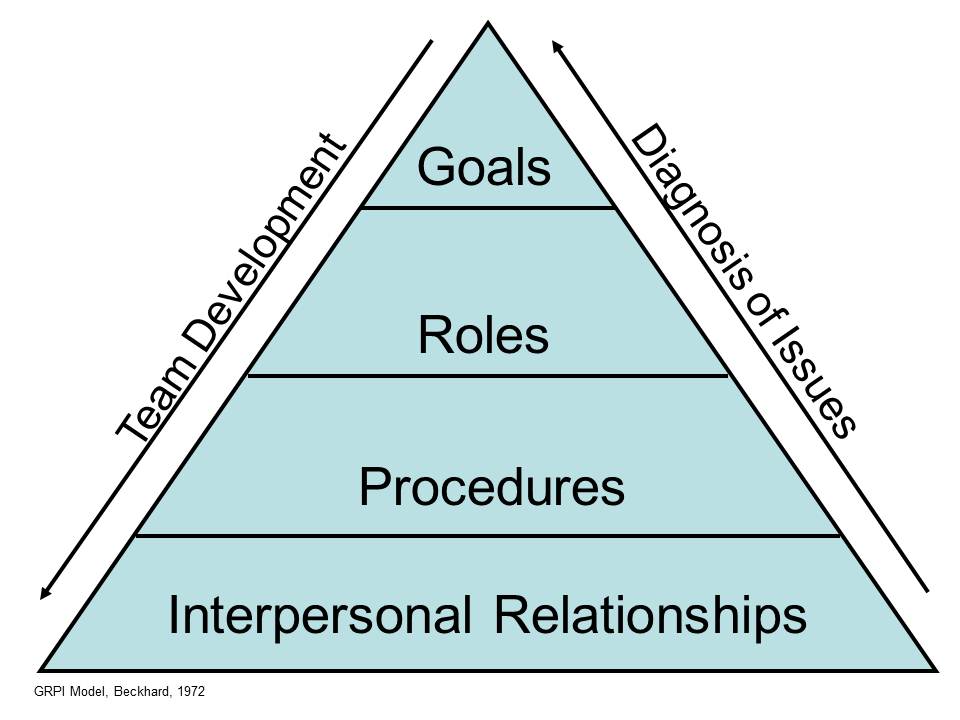What makes teams that are continuously and consistently high-performing unique? Is there a secret ingredient that makes them click? How can executives support and accelerate this process?
In order to be successful, every team needs a common goal that is known, understood and accepted by all members, each feeling individually responsible for its accomplishment. In their book ‘The Wisdom of Teams’, Jon Katzenbach and Douglas Smith state ‘high performance teams typically reflect strong extensions of the basic characteristics of teams’. These ‘strong extensions’ grow out of an intense commitment to the team’s mutual purpose. The following characteristics exhibited by high performance teams differentiate them from ordinary teams:
- A deeper sense of purpose and reason for being
- High output and high-quality targets compared to average teams
- Efficient working methods, excellent problem-solving skills and respectful collaboration
- Acknowledgement of their joint accountability towards the common purpose, in addition to individual obligations to the specific roles
- A complementary skill set, and ideally interchangeable skills
- Managers who are well-respected for the example they set
- Strong client orientation
For teams to be able to perform effectively there are some bottom-line requirements. All teams need…
- a sense of purpose and a distinct mission
- the mission to be broken down into meaningful performance goals for each team member to pursue
- to develop the right working methods, procedures and processes to ensure that they accomplish tasks efficiently and effectively
- to support the common mission and take their individual responsibility seriously in accomplishing the required task
- a suitable mix of skills, experience and expertise in order to meet the challenges of the team task
High-performance teams apply all these qualities in a more advanced and outright way than average teams. The uniqueness of high-performance teams, though, is that team members are passionate champions for their cause with an in-built need and ambition to go after bigger challenges. They bring with them a work ethic that creates a deeper commitment to the overall collective mission. Katzenbach and Smith discovered that ’significant performance challenges do more than anything else to foster the development of real teams’. In his book ‘Leading Change’ John P. Kotter looks at performance from a change management perspective. Kotter confirms that teams built on mutual trust and respect can thrive during organizational change. Not surprisingly, these are the basic ingredients:
- Common vision and goals
- Shared leadership and accountability
- Continuous learning and development
- Customer focus
- Capability to solicit and utilize feedback and data
Well-integrated teams that keep the focus on their goals and are self-sustaining will achieve great results. They just click. Successful team leaders calculate the up-front investment and then adopt a process to get the team to pull together to maximize the return on that investment. High-impact leaders create a clear mission and take the time to get people to buy into it. Next, they assess the current situation and work through the courses of action, which are likely to yield results. It is this up-front effort to achieve a defined end-state that makes the process work. This foundation-laying aspect of leadership is a determining factor as to why some teams seem to grasp and then do their utmost to achieve organizational goals. It’s all about how the leader visualizes a positive end result and consistently works towards it. The conversations these leaders have with their teams are always candid, clear, and followed by committed action. Richard Beckhard’s GRPI model (1972) addresses the topic of teambuilding, questions different aspects of effective and efficient teamwork and is a useful diagnostic tool when teams are stuck.

GRPI stands for:
Goals
- Clarity about the main purpose of the team
- Agreement on the desired results
- Understanding of the main tasks
- Agreement on the standards and expectations
- Clarity of priorities and deadlines
- Understanding of boundaries
Roles
- Acceptance of a team leader
- Understanding all members’ roles
- Individual responsibilities
- Shared responsibilities
- Clear boundaries
- Identifying and filling gaps
Processes
- Team processes – e.g., how decisions are made, how the team solves problems, resolves conflict and communicates
- Work processes – e.g., procedures and workflow
Interpersonal Relationships
- Relating with the other team members
- Trust
- Sensitivity and flexibility
- Good communication
- Collaboration in problem-solving
- Effective methods for dealing with conflict
Intact or new teams take the opportunity to discuss and structure a project into an action plan by skillfully combining the attributes of high-performing teams with the model of GRPI. A powerful combination emerges when a team understands its players and the direction it needs to take in accomplishing its goals; GRPI is a simple, user-friendly, can-be-done-anywhere tool to achieve results. In a nutshell, in order to boost team performance and support constant high achievement, successful leaders do the following:
- Set challenging and inspiring performance goals, especially with performance-driven teams
- Encourage personal initiative and develop individual leadership qualities
- Strive to create the most conducive team composition with the right combination of skills
- Cater to the team’s training needs to help them further develop and refine their working methods
Although these individual measures may offer a kind of magic formula, in the end it’s all down to good leadership. Contact me, and with targeted coaching, we can help you hone your high-impact leadership skills so that you can do some magic for your team.
Curious to find out more? Please contact me to find out if coaching is right for you.
